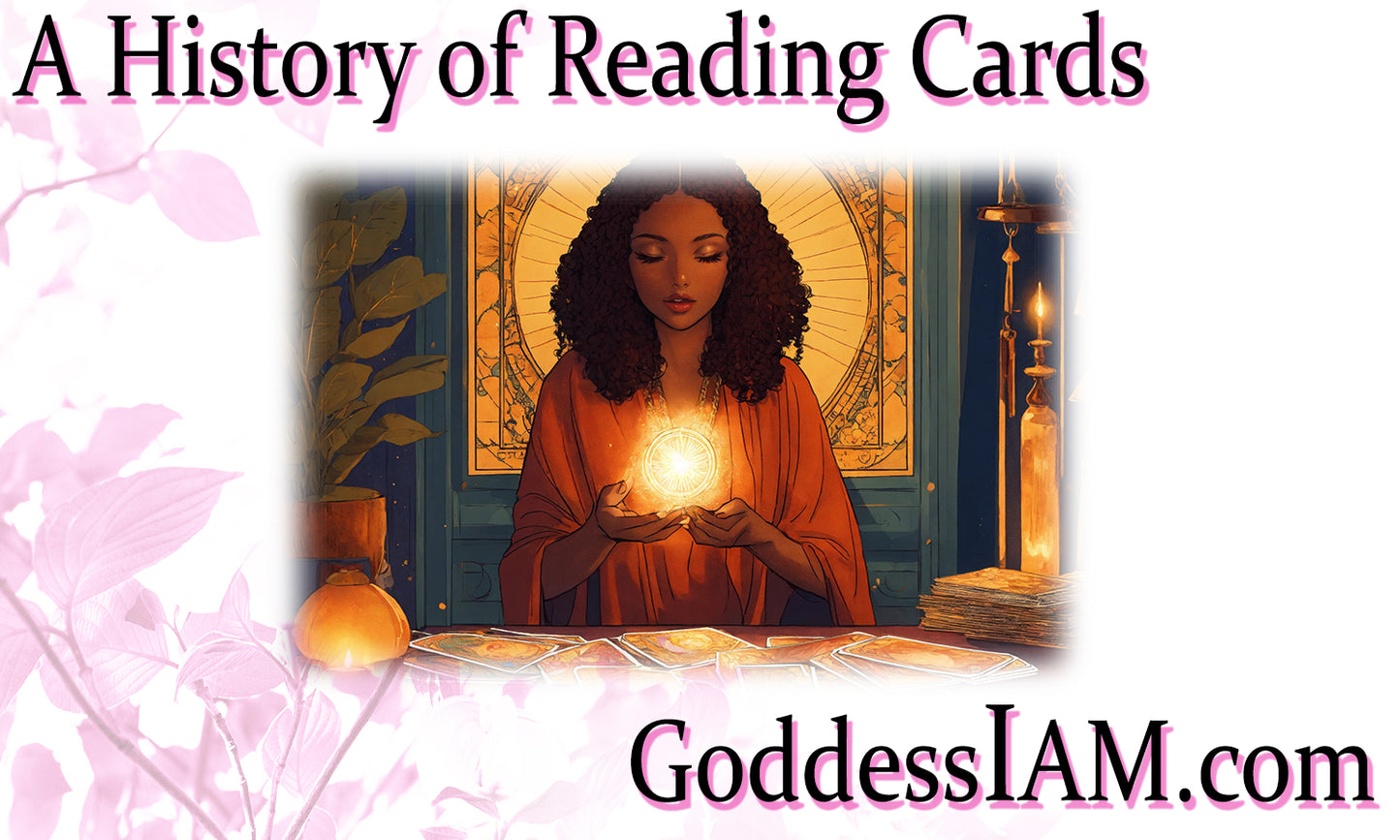
Cartomancy: A Journey through the Cards of Fate and Fortune
Cartomancy, the practice of divining the future or seeking insights through the use of playing cards, has a rich and diverse history. The art of cartomancy has captivated individuals across cultures and epochs, offering a means to glean guidance, uncover secrets, and explore the human experience. This historical exploration traces the origins, development, and cultural significance of cartomancy, shedding light on its evolution from ancient times to the modern era.
Ancient Roots:
The origins of cartomancy can be traced back to ancient China, where playing cards were used for both games and divination. Early Chinese playing cards featured various suits and numbers, and the combination of these cards was interpreted to predict future events. Over time, this practice evolved, and cards became associated with specific symbols and meanings.
In ancient India, cards were also employed for divination and were part of a game known as Ganjifa. The game's cards were decorated with intricate designs and symbols, each carrying distinct interpretations. Similar to the Chinese, Indian practitioners began to assign divinatory meanings to these cards.
Arrival in Europe:
Playing cards, as we know them today, were introduced to Europe through trade and cultural exchanges. It is believed that playing cards arrived in Europe from Egypt or the Middle East during the 14th century. The Tarot, a deck of 78 cards with symbolic imagery, is often associated with divination and is believed to have roots in both Europe and the Middle East.
Tarot Cards and Cartomancy:
The Tarot, a significant facet of cartomancy, is a deck of cards characterized by four suits — Wands, Cups, Swords, and Pentacles — along with additional cards known as the Major Arcana. The Major Arcana cards feature symbolic imagery, often depicting archetypal figures and allegorical scenes.
Originally intended for playing card games, the Tarot gradually became intertwined with mystical and esoteric practices. The 18th century saw a shift in how the Tarot was perceived, with practitioners beginning to see it as a tool for divination and spiritual insight. Notable figures like Antoine Court de Gébelin and Etteilla played crucial roles in popularizing the Tarot for divinatory purposes during this period.
The 19th Century and Golden Dawn:
The 19th century marked a turning point in the history of cartomancy, especially Tarot card reading. The Hermetic Order of the Golden Dawn, a secret society dedicated to the study and practice of the occult, significantly contributed to the Tarot's esoteric interpretation and its integration into divination.
Members of the Golden Dawn, including influential figures like Arthur Edward Waite and Aleister Crowley, designed and published Tarot decks that incorporated symbolism and imagery influenced by various mystical traditions. These decks, such as the Rider-Waite Tarot and the Thoth Tarot, became pivotal in modern Tarot readings and set the standard for interpretation and symbolism.
Modern Cartomancy and Tarot Reading:
In contemporary times, cartomancy, particularly Tarot reading, has experienced a resurgence in popularity. Tarot decks are widely available, each with unique interpretations and designs. Practitioners often utilize Tarot cards to gain insights into personal matters, explore spiritual growth, and seek guidance on life decisions.
The advent of the internet and online platforms has further expanded the reach of cartomancy. Tarot readings can now be conducted remotely, allowing individuals to seek guidance from experienced readers globally. Social media, websites, and mobile applications offer a plethora of resources and interpretations, making Tarot more accessible to a diverse and global audience.
Scientific Perspectives and Skepticism:
From a scientific standpoint, cartomancy, like other forms of divination, is often viewed as a belief system rooted in psychological processes and chance. Critics argue that the interpretations and insights derived from cartomancy are subjective and rely on the reader's intuition and the querent's receptivity.
Despite skepticism, practitioners and enthusiasts assert that cartomancy, especially Tarot reading, holds genuine value in providing guidance, self-reflection, and clarity. They emphasize the importance of the symbolism, intuition, and archetypal energies embedded within the cards, believing that they can offer profound insights into the human psyche and the universal energies at play.
Conclusion:
Cartomancy, the practice of divination through playing cards, has journeyed through centuries and across cultures, leaving an indelible mark on human spirituality and understanding. From ancient Chinese and Indian practices to the European adoption of playing cards and the development of the Tarot, cartomancy has evolved into a diverse and vibrant practice.
In modern times, cartomancy remains relevant, and Tarot reading, in particular, has gained widespread popularity, attracting seekers from all walks of life. Whether as a tool for reflection, guidance, or spiritual exploration, cartomancy continues to serve as a powerful medium for those seeking to unlock the mysteries of fate and fortune.
CLICK HERE TO SEE OUR ORACLE DECKS
